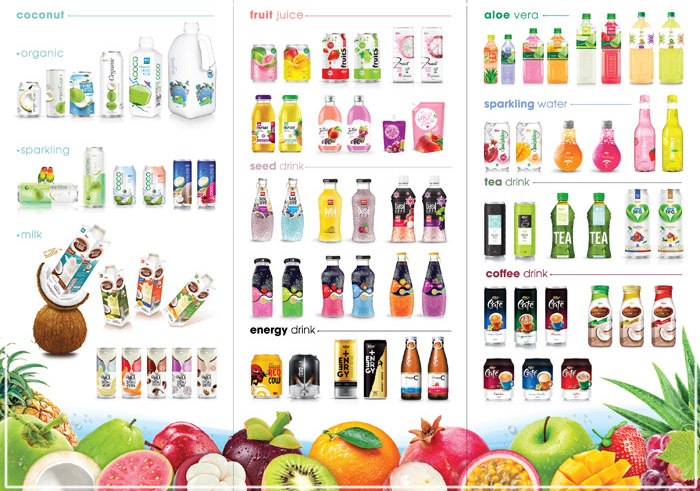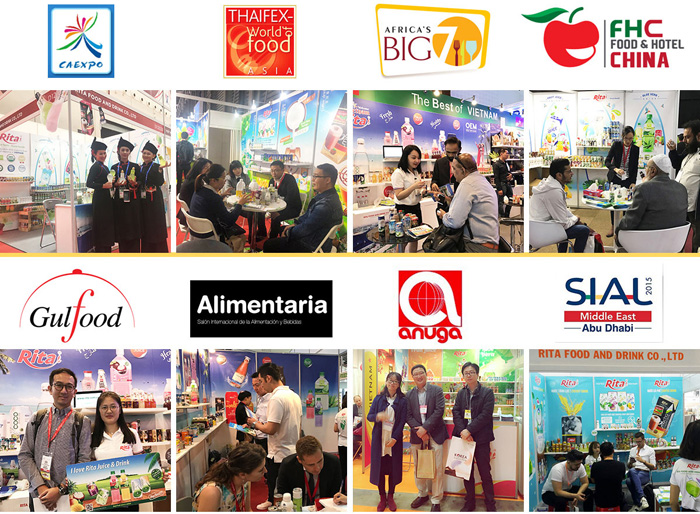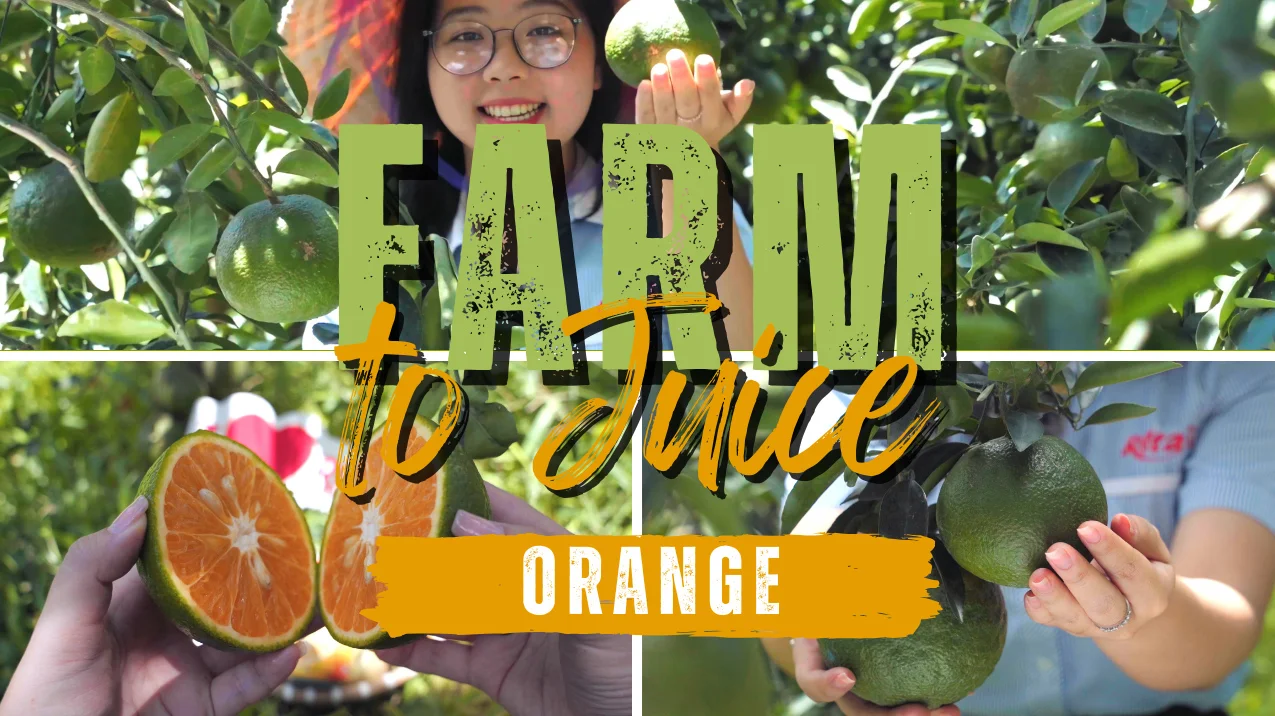Ready to build a healthier, export-ready orange juice bottle line—clean label, recyclable packaging, and tailored to your market?
Key takeaways:
-
Healthy by default: The modern orange juice bottle succeeds when it clearly communicates clean-label benefits—no added sugar, simple ingredients, and vitamin C credentials—without sacrificing taste.
-
Format matters: Single-serve PET for on-the-go convenience and glass bottles for premium channels both win; UHT/aseptic enables shelf-stable exports while NFC appeals to freshness seekers.
-
Design drives trust: Transparent bottles, legible front-of-pack claims, and QR-linked sourcing stories convert health-minded shoppers online and in-store.
-
OEM/ODM advantage: With Rita (rita.com.vn), brands can move from concept to shelf quickly—custom formulas, pulp levels, sweetness, and packaging tailored to each market.
-
Portfolio strategy: Launch a core orange juice bottle first, then ladder into orange-mango, orange-carrot-ginger, orange-chia, or vitamin-fortified extensions to grow baskets and occasions.
1) Why the orange juice bottle is back in the spotlight
The “better-for-you” movement reshaped beverage aisles worldwide. Consumers aren’t just reading labels; they are buying labels. Words like “no added sugar”, “natural ingredients”, “NFC orange juice”, and “recyclable bottle” change behavior in seconds. Among fruit beverages, the orange juice bottle has a special place because it pairs familiarity (everybody knows orange) with functional cues (vitamin C, hydration, antioxidants). The result is a category that feels comfortably healthy—not intimidating like niche functional tonics, not indulgent like sodas.
This resonance isn’t accidental. The orange juice category learned from past cycles and now aligns with four non-negotiables:
-
Clarity of recipe (short ingredient lists, natural flavor if used, clear pulp callouts).
-
Macronutrient management (lower sugar, optional fiber).
-
Food safety & shelf life (pasteurization, UHT/aseptic processing).
-
Sustainable packaging (recyclable PET, lightweight formats, glass for premium).
When those elements work in harmony, the orange juice bottle becomes a credible everyday health choice.
2) Health first: what your orange juice bottle must communicate
Clean label and transparency
A clean recipe is table stakes, but visible proof converts. The bottle itself should make health legible:
-
Ingredient simplicity: Orange juice (NFC or from concentrate), no artificial colors, no preservatives when the process allows, and no added sugar options.
-
Nutrient signaling: Prominent vitamin C icon, optional fiber or functional botanicals if aligned with local regulations.
-
Pulp levels: “With pulp,” “light pulp,” or “no pulp” help set texture expectations and reduce returns.
-
Allergen clarity: If blending (e.g., orange-carrot), place allergen statements responsibly and consistently.
Smart sweetness and acidity
Healthy-living consumers still demand great taste. Balance Brix (perceived sweetness) and acidity (freshness). Many successful private-label lines offer no-added-sugar and lightly-sweetened SKUs side-by-side—letting the shopper choose without compromising brand clarity.
Processing that preserves goodness
Two main routes dominate:
-
Pasteurized bottled orange juice: Familiar “chilled” cues, shorter shelf life, suited for nearby markets or premium retail.
-
UHT/aseptic orange juice in PET or carton: Shelf-stable with long shelf life; ideal for export, e-commerce, and modern trade with variable cold-chain conditions.
NFC orange juice (Not From Concentrate) brings a freshness halo and usually commands a premium. From-concentrate remains vital for cost control, consistency, and scalable exports—especially for value-tier private labels.
3) Packaging that signals wellness and sustainability

PET vs. glass: choose by channel and story
-
Recyclable PET (single-serve 250–330 ml): Lightweight, shatter-safe, budget-friendly, perfect for on-the-go and convenience retail.
-
Glass bottles (300–500 ml, 1 L family-share): Premium hand-feel, great for cafés and hospitality; pairs well with NFC or higher fruit content narratives.
What the label should say—and show
-
Front-of-pack “facts”: Vitamin C badge, no added sugar, pulp level, and a simple origin line (e.g., “Vietnam orange juice,” or sourcing story if blended).
-
Color integrity: The orange hue is half your marketing. Transparent bottles tell a freshness story before words do.
-
QR code storytelling: Link to rita.com.vn landing pages showing ingredient sourcing, bottling standards, and recycling instructions.
Structural and closure details
-
Tamper-evident caps and oxygen-management (where applicable) build quality cues.
-
Ergonomic shapes with easy-grip panels improve usability and reduce drops—important in single-serve.
-
Sleeves vs. paper labels: Shrink sleeves deliver 360-degree design; paper labels suit minimalist, eco-forward aesthetics.
4) Portfolio architecture: how to grow beyond the core orange juice bottle
A scalable portfolio converts one-time trial into habit:
Stage 1 – Core hero
-
No-added-sugar orange juice bottle (with/without pulp), 250–330 ml and 1 L.
-
Position as an everyday health choice; spotlight vitamin C and clean label.
Stage 2 – Flavor bridges
-
Orange-mango (mainstream appeal).
-
Orange-carrot-ginger (light functional twist).
-
Orange-pineapple (tropical, family-friendly).
Stage 3 – Functional lifts
-
Orange-chia (texture + fiber cues).
-
Vitamin-fortified orange juice (per local rules).
-
Low-cal citrus blends featuring reduced sugar positioning.
Stage 4 – Channel-specific SKUs
-
Hotel/minibar glass (250–300 ml).
-
School/office combo packs (6- or 12-packs of 250–330 ml).
-
Foodservice formats (1–2 L PET or carton) with pour-control caps.
5) Quality, safety, and compliance: the invisible advantages that matter
Behind a successful orange juice bottle is a web of standards and controls:
-
Raw materials: Consistent Brix/acid targets and sensory checks at intake.
-
Microbiological safety: Validated thermal profiles (pasteurization or UHT/aseptic) and rigorous HACCP/ISO frameworks.
-
Stability tests: Shelf-life validation, light-exposure tests, transport vibration/drop tests, cap torque monitoring.
-
Labeling compliance: Region-specific nutrition formats, additive declarations, health-claim vetting, and language localization.
-
Traceability: Batch codes and QR links to lot histories boost consumer confidence and importer trust.
Rita’s OEM/ODM programs are built on these fundamentals—so your private label can launch faster while staying compliant.
6) Rita: your OEM/ODM partner for bottled orange juice
Who we are
Rita Food & Drink Co., Ltd is a Vietnam-based beverage manufacturer with robust OEM/ODM and private-label capabilities across juice, coconut water, teas, coffees, aloe drinks, and functional blends.

What you can customize
-
Formulation: NFC or from-concentrate; with/without pulp; no-added-sugar or lightly sweetened; optional fiber/vitamin C; citrus blends.
-
Processing: Pasteurized or UHT/aseptic for shelf-stable exports.
-
Packaging: PET bottles, glass bottles, and cartons in multiple sizes; tamper-evident closures; labels or shrink sleeves.
-
Design & compliance: Artwork creation, multilingual labeling, and import documentation for your target region.
-
MOQ & timelines: Pilot runs for testing, then scale-up for national or multi-country distribution.
Why brands choose Rita
-
Speed-to-market: An integrated R&D → pilot → production pipeline.
-
Reliability: International-standard QA, tested logistics routes, and responsive after-sales support.
-
Category fluency: We help position your orange juice bottle within a coherent portfolio that scales across price tiers and channels.
FAQs
1) What’s the difference between NFC orange juice and juice from concentrate?
NFC is squeezed and filled with minimal processing, prized for freshness cues. From concentrate is reconstituted for consistent taste and better cost control—great for value tiers and export reach.
2) Which bottle material is best: PET or glass?
Both are recyclable. PET is light, durable, and travel-friendly; glass signals premium and suits cafés/HoReCa. Your channel and price tier should drive the choice.
3) Can I launch a no-added-sugar orange juice bottle?
Yes. We can formulate no-added-sugar or reduced-sugar SKUs and tune Brix/pH to keep flavor balanced.
4) How long is shelf life for bottled orange juice?
It depends on process and packaging. Pasteurized chilled products have shorter shelf life and stricter cold-chain needs; UHT/aseptic products are shelf-stable for longer—ideal for export.
5) Do you support private label and label localization?
Absolutely. Rita provides OEM/ODM services: custom formulas, local-language artwork, nutrition panels, and import documentation for multiple regions.
6) Which sizes sell best?
For single-serve, 250–330 ml is the sweet spot. For families and foodservice, 500 ml–1 L works well. We’ll align sizes with your channel strategy.
7) What flavor extensions should I launch next?
Orange-mango (mainstream win), orange-carrot-ginger (functional), and orange-chia (texture/fiber) are proven bridges that grow baskets.




